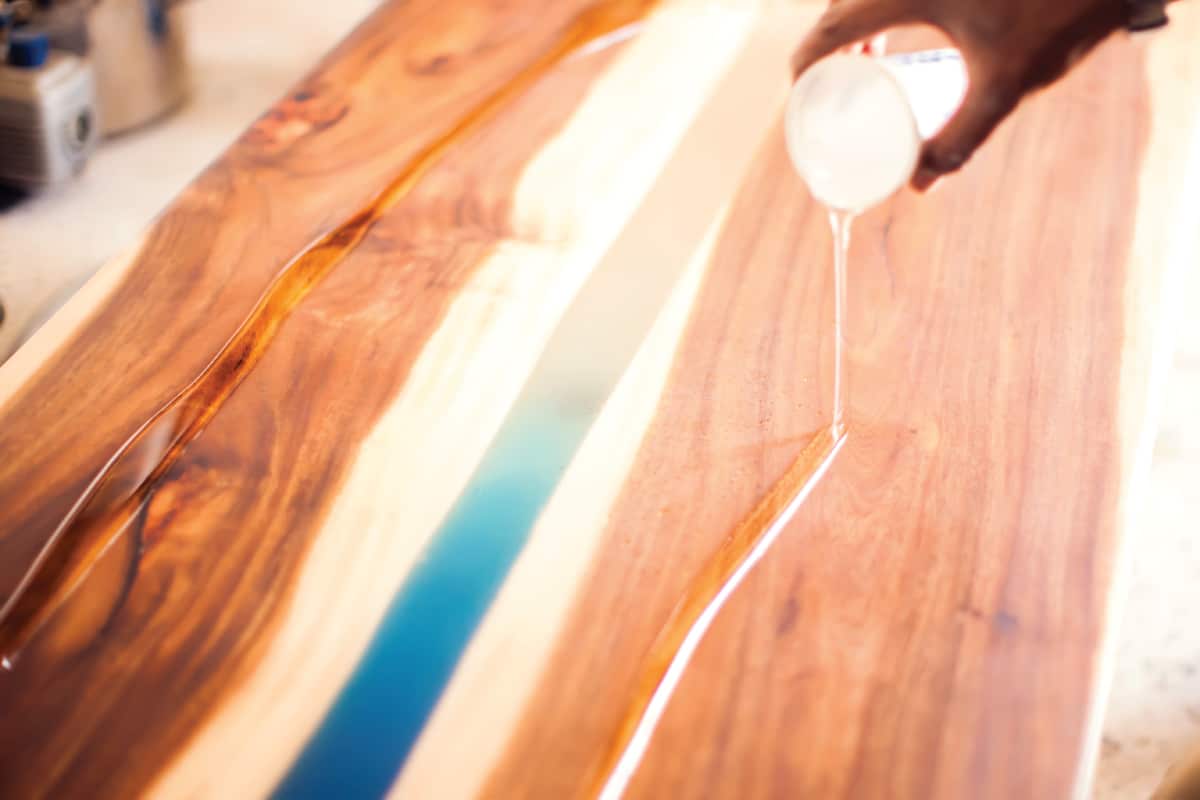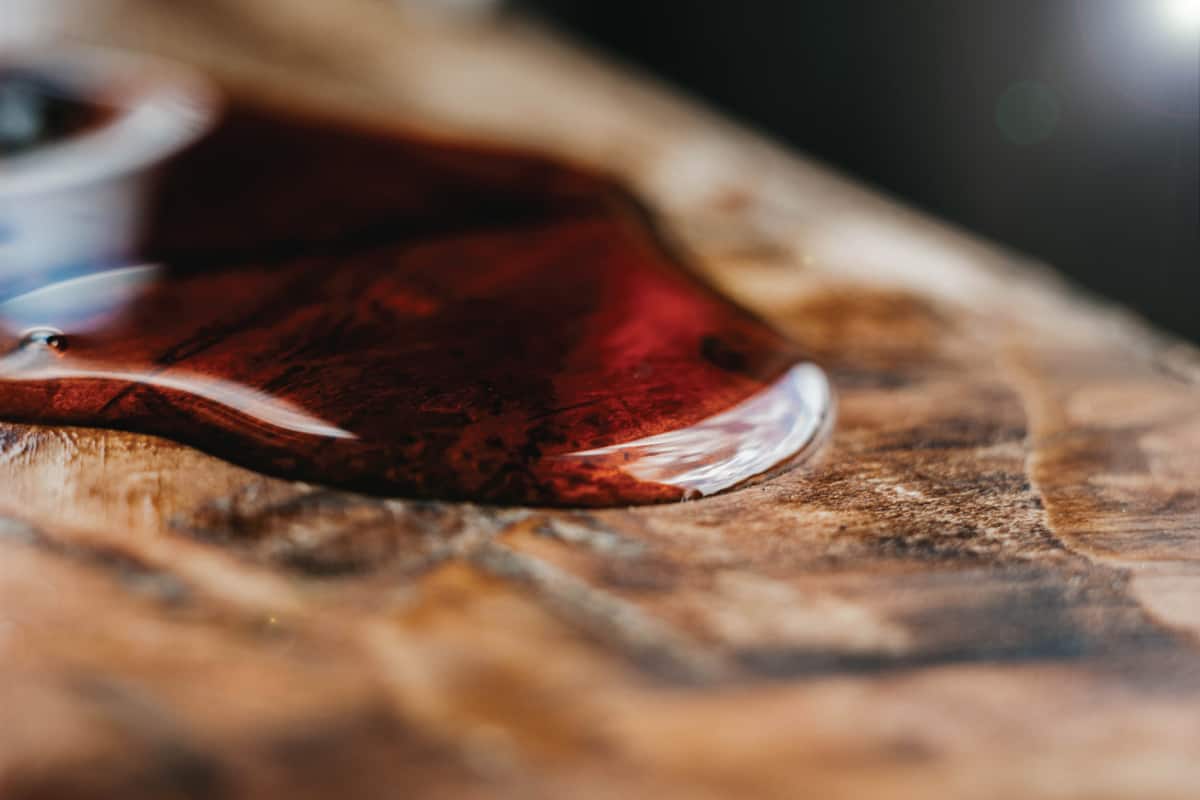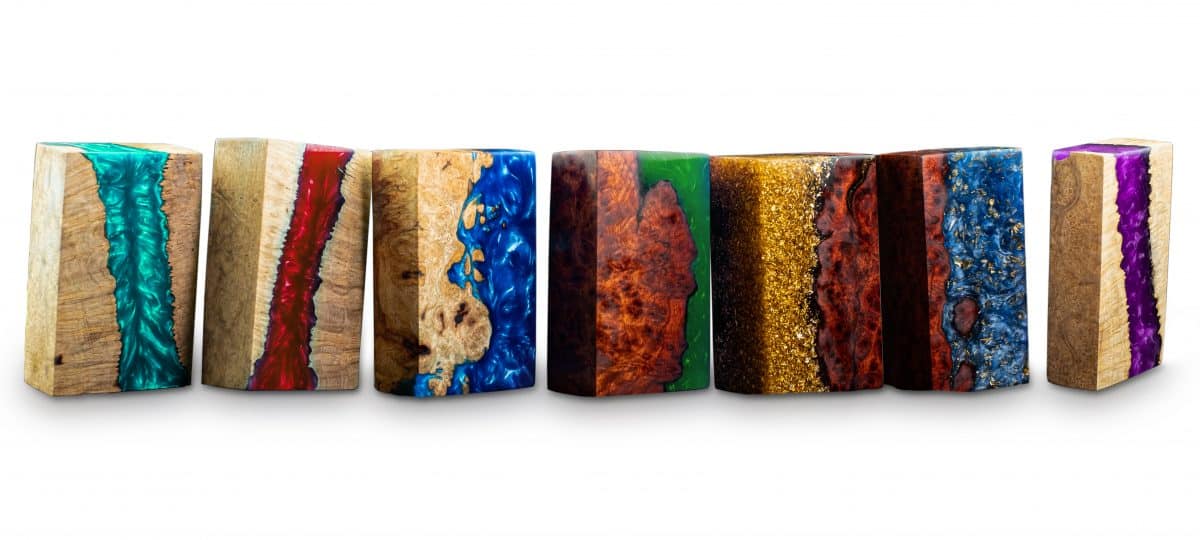Epoxy resin is a unique compound that is widely used by professional woodworkers and hobbyists alike. Its bonding ability to wood makes it suitable for a variety of projects. It can help repair or replace rotted wood, provide a scratch- and moisture-resistant clear-coating for wood surfaces, and act as a substitute for wood glue. With that being said, does epoxy soak into wood? We've done the research to bring you the answer.
Epoxy soaks into wood surfaces on its own, but there are some important steps you should take prior to applying the epoxy so that it will soak in deeper, faster, and more evenly. These steps include:
- Cleaning
- Drying
- Sanding
Working with epoxy isn’t difficult, but it’s more than just applying it to the surface and letting it dry. You’ll want to know what type of epoxy resin your project is most suited for, whether or not applying the epoxy to a stained surface is advisable (if applicable), and what the overall advantages and disadvantages this material has in relation to your project. Keep reading to learn more about epoxy's relationship with wood.
![Texture of table made from solid wood treated with varnish and epoxy resin, Does Epoxy Soak Into Wood? [Here's how to make it soak deeper and faster]](https://uooz.com/wp-content/uploads/2020/11/Texture-of-the-table-is-made-from-solid-wood-treated-with-varnish-and-epoxy-resin-does-epoxy-soak-into-wood-heres-how-to-make-it-soak-deeper-and-faster.jpg)
How To Prepare Wood For Epoxy

Properly preparing the wooden surface can be the difference in your project being a success or one you’ll need to do over. Cleaning, drying, and sanding the surface of the wood is essential. Once these steps have been completed, you can apply the epoxy. If the wood has been properly prepared, the epoxy should soak into it with no issues. Let's take a closer look at the necessary steps:
Cleaning
Prior to applying the epoxy to the wood, you will need to clean the area thoroughly. Using a solvent is ideal, as it’s the best way to ensure that any grease, oils, or other contaminants are completely removed. Remember that anything left on the surface of the wood will be entrapped permanently after the epoxy is applied, so it’s a good idea to clean it twice.
A lacquer thinner will provide great results, but there are a variety of other cleaning agents that you can consider. For safety reasons, please consult the manufacturer’s directions and safety guidelines prior to using any chemical agent.
Click here to see this product on Amazon.
Drying
As soon as you’re satisfied with the scrubbing you’ve given the wood, it will be time to dry the surface. While cotton products will work, it’s best to use paper towels. Paper products will be able to soak up any leftover cleaning agent easier and can be immediately disposed of.
Sanding
When the surface area is clean and completely dry, gently sand the wood with 80 grit sandpaper. By sanding, you are making the wood easier for the epoxy to adhere to while it dries. Depending on the amount of surface area to be sanded, you may consider an orbital hand sander for faster completion, although if it’s a small area or one with hard to get to nooks and crannies, be prepared to use your hands to directly sand the wood.
Click here to see this 80 grit sandpaper on Amazon.
Of course, you’ll want to be sure to remove any sawdust or other debris from sanding before you apply the epoxy. As soon as you tape the edges to prevent dripping, you’re ready to mix the epoxy and pour.
Applying The Epoxy
It’s best to start your pour in the middle of the surface area. Epoxy resin is thick and slow-moving and is best spread with a spatula or a plastic paint stirrer. Pour and spread as evenly as possible. The thick consistency allows the epoxy to settle level as it dries.
You’ll notice air bubbles in the poured epoxy. Prior to the epoxy drying, you’ll want to rid your finish of these, or they’ll remain trapped and will affect the appearance. A blow torch on low, a heat gun, or a handheld hair dryer positioned 6 inches from the surface causes the air bubbles to rise to the top and escape. Be sure to use these tools slowly and evenly, so that the epoxy doesn’t burn.
Check out this heat gun on Amazon.
The epoxy will dry on its own. The length of time it takes for your project to totally cure is related to the temperature it’s exposed to. The warmer it is, the faster the cure time.
Does Epoxy Strengthen Wood?
People commonly ask if the epoxy strengthens the wood that it’s applied to. While epoxy resin will not make your wooden surface indestructible, it will certainly make it more durable. As noted above, epoxy resin will soak into the wood. Upon drying, the epoxy’s bonding agent causes the wood to be less flexible and thus stronger. In addition to added strength, the epoxy adds years of life to the wood as it protects the wood from moisture and rot.
What Kind Of Epoxy Should You Use On Wood?
The type of epoxy you choose for your project depends on several factors. Is your project interior or exterior? Are you using the epoxy to coat a surface, or are you simply filling holes in the wood? How important is the level of scratch resistance? Different grades of epoxy work better for certain uses. Be sure to carefully read the manufacturer’s label before selecting your epoxy resin, to make certain that the one you buy will produce the best results.
If your finished project is outdoors and you desire a true clear coat, be mindful that epoxy is susceptible to exposure to UV rays from the sun. In tinted epoxy, this isn’t much of an issue. But if you want the wood to shine through the coats in the most natural way possible for a long time, consider purchasing an epoxy that is highly UV resistant.
Click here to see this UV-resistant epoxy on Amazon.
Can You Stain Wood Before Applying Epoxy?

Should you be considering applying epoxy to a stained wooden surface, pay careful attention that the type of resin you’re using will work with what has been stained. It’s best to always test a small area to see if the epoxy severely discolors or damages the stain. This should be done whether or not the wooden surface was pre-stained or if you did your own staining. This will save you hours of work removing dried epoxy and restaining, should the epoxy not be compatible.
Does Epoxy Resin Darken Wood?
Applying a clear epoxy resin to wood will not alter the color of the wood, although the resin does look cloudy as it dries. This cloudiness disappears after curing. Should you desire some color to your finished product, there are a wide variety of colored epoxy products available from various manufacturers.

Colored epoxy adds an extra element of intrigue to your wood project.
In Closing
Epoxy resin is an excellent finish alternative that requires a few important steps during preparation. Following the above tips will help you along the way so that you can enjoy your finished project for many years to come.
Curious about other epoxy applications? Check out our post, Is Epoxy Grout Waterproof?
Were you completing a paint project outside and accidentally drip paint on the porch? Learn How To Remove Paint From A Concrete Porch.




